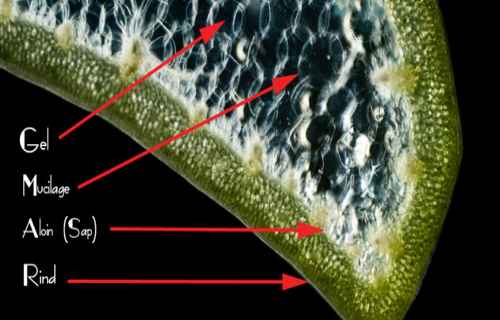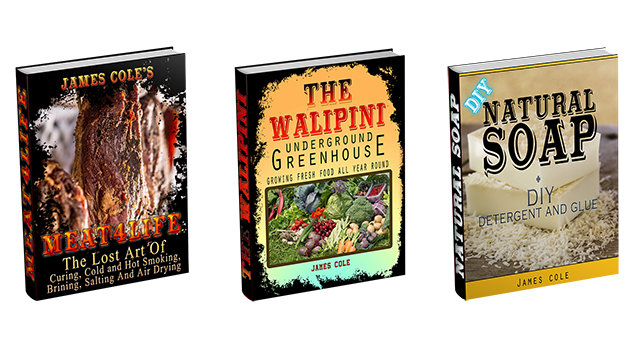Do you think your hair takes a lot of abuse now? Are you spending a fortune on shampoos that make your hair look worse than it did before? As bad as it may be now, wait until disaster strikes and no shampoos are available to buy. Among other medicinal and body care benefits, Aloe Vera can also be used to make a shampoo that is easy to adapt to your needs. With our easy to follow recipe, you’ll be able to make your own aloe vera shampoo in no time!
WHAT IS ALOE VERA AND WHY IS IT SO GOOD FOR MAKING SHAMPOO?
Aloe Vera is a succulent that grows in tropical climates. It can be used for a number of medicinal purposes ranging from managing skin wounds to relieving heartburn and constipation. Aloe makes an ideal shampoo additive because it is very soothing and does not leave a greasy feel to your hair. It can also soothe scalp irritations and relieve itching.
GETTING STARTED WITH DIY SHAMPOO OPTIONS
Before you get started with making your own shampoo, it is important to realize that there is a huge difference between what you buy on the market and what you will be making at home. Here are some of the key differences that I found during the process of making an aloe shampoo recipe that worked for me:
- Do not expect the shampoo to last for weeks, months, or even years after you make a batch of it. At most, you can expect aloe shampoo to last two or three days in the refrigerator.
- Unless you use an actual liquid soap base, the shampoo will not make suds or lather.
- If you do not use a lot of oil or gel in the shampoo recipe, do not expect it to be thick or oily. In fact, for the recipe I’m about to share, I found that it was best to put the shampoo in a sprayer and then work it into my hair and scalp directly.
- Depending on the recipe modifications that you choose, the shampoo may or may not have an alkaline pH (7.0 is neutral anything above is alkaline, and anything below is acidic), which is required for a cleansing shampoo or soap. If the shampoo contains any kind of water, you will not be able to store it away because mold, bacteria, and fungi will grow in it. There are preservatives that you can use, however they may not be available during a major crisis.
- Vitamin C and Vitamin E can be used to stabilize the shampoo and also add health benefits, however, they will not prevent microbial growth for long periods of time.
THE ALOE SHAMPOO RECIPE AND YOUR CHANGING NEEDS
Your hair and scalp will respond very differently to DIY shampoo options. These changes will happen no matter whether you make Aloe shampoo or some other type. If you use commercial shampoos, you may not realize how harsh these chemical concoctions are on your hair. They are designed to strip away grease, dirt, and grime. Unfortunately, they also strip away the oils that your hair needs to protect it from splitting, fraying, and being ruined. Even though conditioner replaces some of these oils, they can never be as good as what your own body makes.
When you start using your own DIY shampoo, you may notice that your hair will suddenly become more oily. This is happening because your scalp has been making a lot of extra oil (sebum) to compensate for all the oils you have been removing with the shampoo. Once the sebum production slows down, you will need to adjust the shampoo recipe to meet your hair’s changing needs. In this case, you might only use baking soda or Castile soap once a week, or even less if your hair is relatively clean and does not have large amounts of oil buildup.
PREPARING ALOE PLANTS TO HARVEST GEL
I don’t know about you, but I’ve always found Aloe to be a bit more challenging to grow than other houseplants. Most people say this plant is easy to grow because it needs very little water and attention. On the other hand, if I want to get a nice thick, supple leaf full of gel, then I need the plant to absorb more water in a day or two before I harvest. Since there is more water in the soil, that also increases the risk of the roots becoming waterlogged.
With that in mind, here are my steps for preparing an Aloe plant for harvesting:
- Start off by having at least 5 or 6 aloe plants on hand.
- Choose one plant two or three days before you are going to harvest and give it some extra water. Instead of removing the excess drainage immediately, let it sit for a few hours so that the soil will absorb more water and remain damp longer.
- Watch the leaves carefully. You should see them swell up with excess water. If they become soft, mushy, or split open, then you have added too much water. It is best to work with another plant at this point because Aloe rots very quickly.
 (These leaves have some gel in them, but I would not harvest them unless absolutely necessary.)
(These leaves have some gel in them, but I would not harvest them unless absolutely necessary.)
- For this recipe, you will only need one medium-sized leaf, as long as it is nice and full. After you harvest the leaf, give the plant a bit of extra water if the soil is dry.
 (The lower leaf in this photo is full of gel – you can tell because it is plump over the halfway mark.)
(The lower leaf in this photo is full of gel – you can tell because it is plump over the halfway mark.)
HARVESTING ALOE GEL FOR SHAMPOO
When you first break off an Aloe leaf, you will see the gel almost immediately, but not have access to it. Instead, yellow juice will come out of the leaf first.
- Cut the leaf lengthways in half so that you can see the gel layer of the leaf.
- Use a paper towel to let the juice drain. You should be able to clearly see when the fluid changes from the yellow juice to clear gel.

- Next, take half the leaf and squeeze the skin so that the clear liquid falls into a cup or bowl. Some of the gel will be stickier and thicker than other parts. Let both fall into the bowl.
- Repeat with the other half of the skin.
- While it is beyond the scope of this article, additional steps may need to be taken if you are going to ingest Aloe Vera. The gel is safe to apply to skin and hair, however, some molecules in it may cause cancer if swallowed.
THE BASIC ALOE SHAMPOO RECIPE
The first version of this recipe is best suited for people that have never used DIY shampoo. It will remove more sebum than milder versions, and still give you a chance to become acquainted with making Aloe shampoo and maintaining healthy plants.
Ingredients:
- 1 cup of water
- 1 tablespoon of Aloe gel
- 1 tablespoon of Baking Soda
- 3 Vitamin E oil capsules
Basic Instructions:
- while you are preparing the Aloe gel, boil some water.
- Add the baking soda to the water. Make sure it dissolves completely. Alternatively, if you are using liquid Castile soap (3 – 5 tablespoons), add that at this time instead.
- Next, stir in the Aloe gel.
- Finally, cut open the Vitamin E oil capsules and add them to the mix.
The resulting shampoo will not look all that different from regular water. If you dip your fingers in it and rub them together, you will notice that the liquid is just a bit more slippery. While rinsing your hair, it should feel less greasy. You will know the shampoo is out when you don’t feel the slipperiness of the Aloe.
When using this recipe, do not forget to follow up with a DIY conditioner made of:
- 1 tablespoon of Apple Cider Vinegar (with the mother) to
- 1 cup of water.
You will need the vinegar rinse to adjust the pH of your hair and also help soften it and seal it off. Once you stop using baking soda or Castile soap in the recipe, you will not need to follow up with the Apple Cider Vinegar conditioner. In fact, if you use this conditioner without applying a higher pH solution first, it can make your hair too acidic.
If you want a particular fragrance, go ahead and add a few drops of essential oil. Try to choose an oil that will either match the needs of your scalp and hair or will compliment other herbs in the blend. Depending on your sense of smell and specific hair care needs, this will be a work of trial and error.
Adding dried herbs to the basic recipe can also help with managing dry hair, oily hair, and dandruff. When adding the dried herbs, do not forget to steep them in hot water first, and then drain off the liquid to use in the shampoo. I usually find that 1 ounce of dried herb works well when steeped in one cup of water. Just remember not to add two cups of water to the shampoo!
Here are some herbs you can add to the recipe based on your specific needs:
- For dry hair, add rosemary or calendula. You can also try substituting 3 – 5 tablespoons of liquid Castile soap for the baking soda. The soap will still strip your hair of oil, but not as much as the baking soda. An additional ½ teaspoon of Jojoba oil may also be of some help.
- For oily hair, add lavender, mint, or lemon balm.
- For dandruff, add thyme or rosemary.
- If the Castile Soap is still removing too much oil, add a 1 to 3 teaspoons of lemon juice as needed.
Although I have grown accustomed to spraying this solution into my hair, you may want to decrease the amount of water so that you have a more concentrated solution. If you want something that looks and feels more like shampoo, just reduce the water to 3 – 5 tablespoons.
 PRESERVING AND STORING ALOE SHAMPOO
PRESERVING AND STORING ALOE SHAMPOO
You can stabilize the oils in Aloe shampoo with Vitamin E, which is also good for hair and scalp health. I do not recommend adding preservatives as they will change the way the shampoo works.
As you can see, making Aloe shampoo is fairly simple and inexpensive. You can start using it now in order to improve the appearance and health of your hair. If a disaster occurs, you can also have peace of mind knowing that you can keep your hair clean and in good condition. I am always looking to learn more about herbal remedies and survival skills. Please feel free to comment below about your favorite uses for Aloe Vera, as well as any recommendation you have for making shampoo from it. (source)
Again, click here to learn all about Self-Reliance 365 and saving our forefather’s ways.
Books can be your best pre-collapse investment.
Old Time Wisdom ( Timeless Bits of Wisdom on How to Grow Everything Organically, from the Good Old Days When Everyone Did you can prepare yourself for war by moving to the countryside and building a farm, but you must take guns with you, as the hordes of starving will be roaming. Also, even though the elite will have their safe havens and specialist shelters, they must be just as careful during the war as the ordinary civilians, because their shelters can still be compromised.”)
The Lost Ways (Learn the long forgotten secrets that helped our forefathers survive famines,wars,economic crisis and anything else life threw at them)
Survival MD (Best Post Collapse First Aid Survival Guide Ever)
Conquering the coming collapse (Financial advice and preparedness )
Liberty Generator (Build and make your own energy source)
Backyard Liberty (Easy and cheap DIY Aquaponic system to grow your organic and living food bank)
Bullet Proof Home (A Prepper’s Guide in Safeguarding a Home )
Family Self Defense (Best Self Defense Strategies For You And Your Family)
Survive Any Crisis (Best Items To Hoard For A Long Term Crisis)
Survive The End Days (Biggest Cover Up Of Our President)




